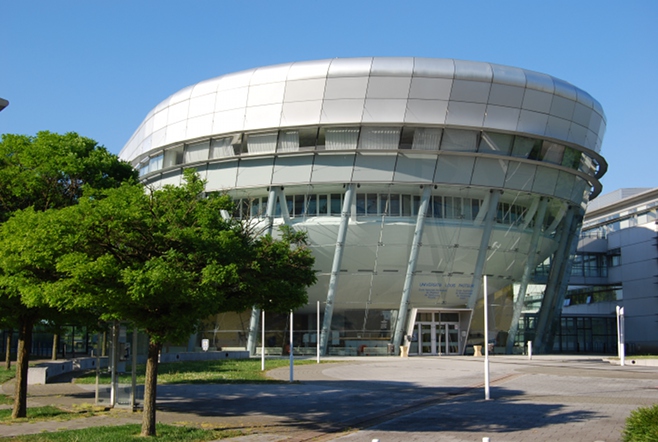« Filling without drilling » – Advances of Lasers in Dental Applications
16 juin 2016 à 10h
par Todor Petrov, Research fellow at the Laboratory of Metal Vapor Lasers (LMVL), Institute of Solid State Physics, Bulgarian Academy of Sciences
Lieu : Illkirch – Pôle API – A302
Abstract : During the last few decades, laser technology has continuously developed, to the point where new types of lasers such as ultra-short pulsed lasers in the subpico second regime have entered medical and dental applications. In the early days, various laser trials with CO2 lasers to make teeth material more resistant to bacteria that cause caries were reported. The trials failed because thermal side effects damaged the enamel. Nowadays, the idea has experienced a renaissance with new lasers and a more adequate pulse regime. In the late 1980’s, the first experimental work demonstrated that Er:YAG lasers can be used to ablate dental tissue such as enamel and dentin. While the first system used an articulated arm for the light transmission, the next generations were equipped with fibre technology which make the application much more flexible. Starting with caries removal and cavity preparations, more application modalities by simply changing the handpiece has made the laser a universal tool in dentistry. Root channel disinfection, soft tissue corrections by ablation and periodontal applications with removal of infected plaques are new avenues of investigation. Treatment of periimplantitis is the latest application in which there is no mechanical alternative. The laser pulses remove the infected bone around the implant and sterilize the surface of the structured implant. Thus implants can be saved so that the growing bone is able to fix them again. Now, in the third generation of lasers, both detection and therapy can be combined with in the same handpiece. This is important in parodontology in which plaque has to be removed without visual contact by the dentist. Such new technology would also be possible for example in treating keyhole caries which develop with in the dentin under the enamel. In this case, it would be possible to pass a fibre through a small hole in order to save sound enamel, to scan over an angle so as to detect where infected material is to be ablated and to then remove the caries in the same procedure. This is not far from becoming a reality, especially with the development of new filling materials adapted to this procedure. In addition, laser sources are becoming smaller and more powerful and diode pumped fibre lasers are replacing solid-state lasers. The broadening of the wavelength spectrum of laser sources also facilitates the selective photothermolysis. Laser tissue diagnosis will become even more important than laser therapy procedures. Combining both online diagnosis and therapy will be a large step forward and breakthrough for safe and effective laser treatment. Tissue thermal damage can be avoided, which means less pain for the patient during treatment and is also likely to reduce the fear that many people have of the dentist. Lasers will eliminate the noise of the dental instruments that to some patients is nearly as disturbing as the physical discomfort. This demonstrates that laser technology has still enough potential for new developments.



